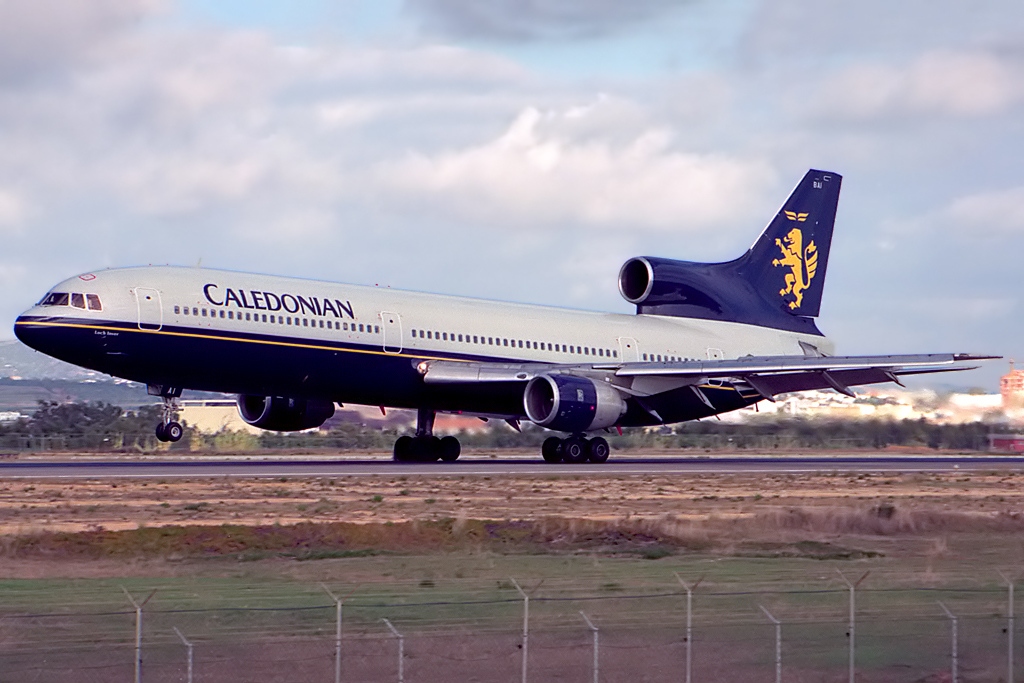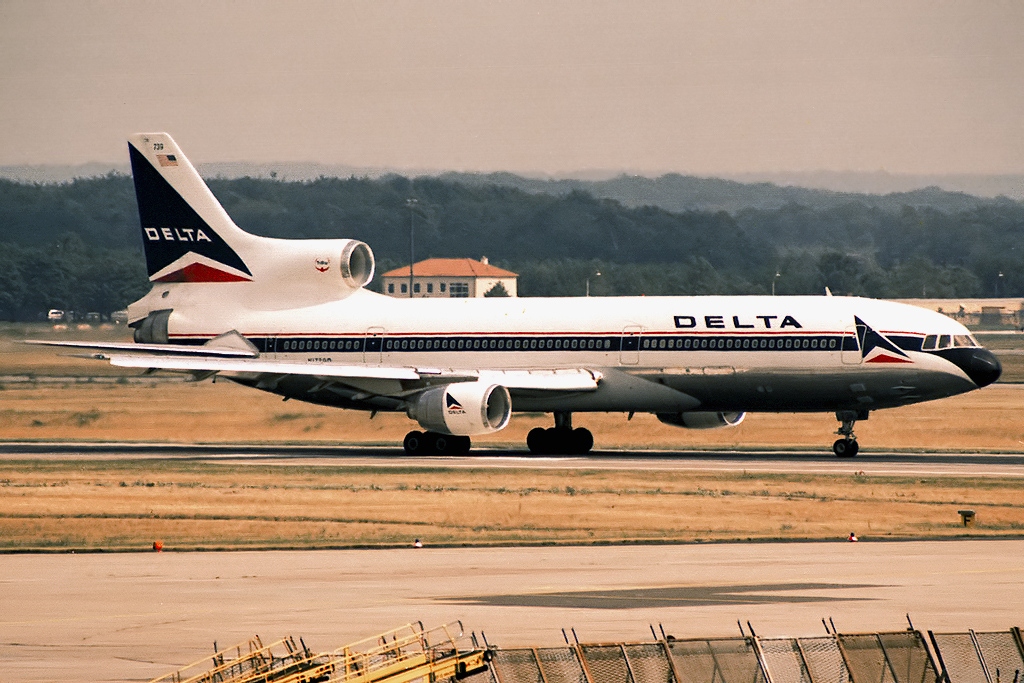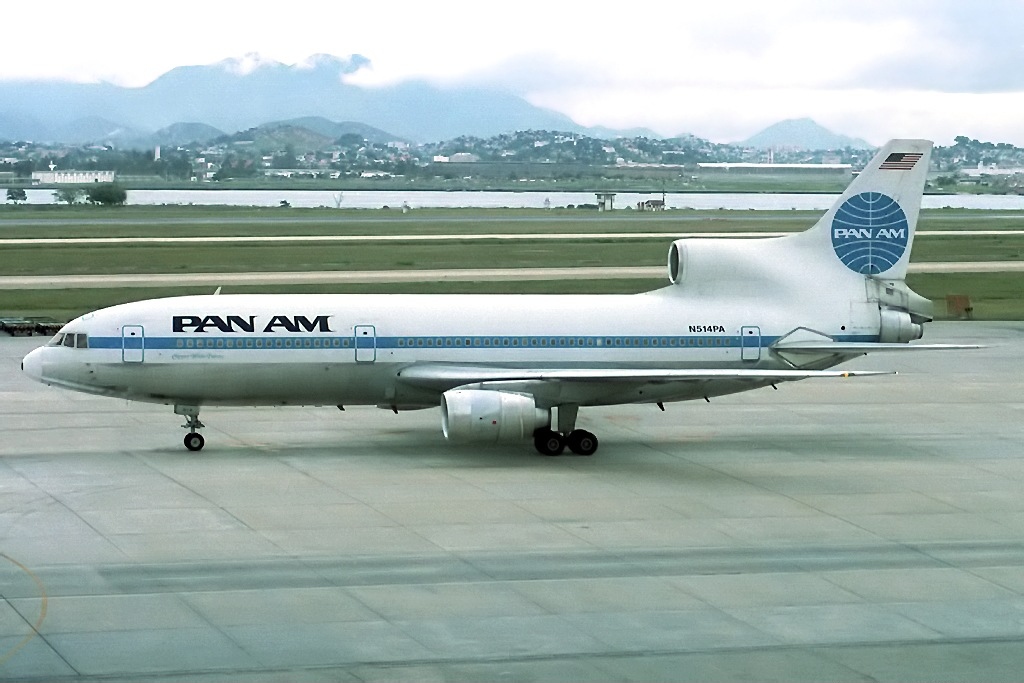The Lockheed L-1011 TriStar was a wide-body airliner that was designed and manufactured by the Lockheed Corporation in the 1970s.
It was unique in its use of a third engine mounted in the tail section of the aircraft, which gave it a distinctive appearance and set it apart from other airliners of the time.
From its ground-breaking technology to its turbulent history, let’s take a look at just why this legendary aircraft continues to hold a special place in aviation enthusiasts’ hearts.”

Competition for the 747 & the DC-10
The L-1011 was designed as a long-range, wide-body airliner that could carry up to 400 passengers, and was intended to compete with other large airliners of the era, such as the Boeing 747 and the McDonnell Douglas DC-10.
[monsterinsights_popular_posts_inline]

It featured a number of advanced technologies and safety features, such as a sophisticated autopilot system, advanced cockpit instrumentation, and redundant hydraulic and electrical systems.
One of the most distinctive features of the L-1011 was its use of a third engine mounted in the tail section of the aircraft.

This “tail engine” was designed to provide additional power and redundancy in the event of an engine failure, and was one of the key selling points of the aircraft.
The tail engine also allowed the L-1011 to operate from shorter runways than other wide-body airliners of the time, which made it attractive to airlines operating out of smaller airports.

The L-1011 was powered by three Rolls-Royce RB211 turbofan engines, which were among the most advanced engines of the time.
The RB211 featured a number of innovative design features, such as a “three-shaft” configuration that allowed for improved efficiency and reduced noise.
However, the RB211 was also plagued by a number of technical issues and delays during development, which ultimately led to financial difficulties for Lockheed and contributed to the cancellation of the L-1011 program.

Despite its advanced technologies and innovative design, the L-1011 ultimately faced significant challenges and was not as successful as its competitors, the Boeing 747 and the McDonnell Douglas DC-10.
One of the main factors contributing to the L-1011’s relative lack of success was its high development and production costs, which made it difficult for Lockheed to compete with larger aircraft manufacturers such as Boeing and McDonnell Douglas.
Another factor was the timing of the L-1011’s introduction to the market. The L-1011 entered service in 1972, just as the airline industry was facing a period of economic turmoil and rising fuel prices.
This made it difficult for airlines to justify the high operating costs of the L-1011, which was less fuel-efficient than some of its competitors.

Despite these challenges, the L-1011 did have a number of notable achievements during its operational life.
The first glass cockpit
For example, it was the first airliner to use a glass cockpit, which replaced traditional analog instruments with digital displays.
The L-1011 was also praised for its safety features, which included advanced fire suppression systems, improved evacuation procedures, and redundant hydraulic and electrical systems.
In total, 250 L-1011s were built over the course of the aircraft’s production run, with the final aircraft being delivered in 1984.
While the L-1011 was not as successful as some of its competitors, it remains an important part of aviation history and is remembered for its innovative design and advanced technologies.
In conclusion, the Lockheed L-1011 TriStar was a unique and innovative wide-body airliner that was designed to compete with other large airliners of the time.

The distinctive ‘tri-jet’ look
Its use of a third engine mounted in the tail section of the aircraft gave it a distinctive appearance and provided additional power and redundancy in the event of an engine failure.
However, the L-1011 ultimately faced significant challenges and was not as successful as its competitors, due in part to high development and production costs.
The Lockheed L-1011 TriStar was operated by a number of airlines around the world. Some of the major airlines that operated the L-1011 include:
- Delta Air Lines
- Eastern Air Lines
- TWA (Trans World Airlines)
- British Airways
- Pan Am (Pan American World Airways)
- Air Canada
- Gulf Air
- Cathay Pacific
- Saudia (Saudi Arabian Airlines)

Other airlines that operated the L-1011 included Air Jamaica, All Nippon Airways (ANA), ATA Airlines, Hawaiian Airlines, Iberia, Laker Airways, LTU International Airways, Northrop Grumman, and Pacific Southwest Airlines (PSA), among others.
The Lockheed L-1011 TriStar’s main competitors were the Boeing 747 and the McDonnell Douglas DC-10, which were also large, wide-body airliners that were designed for long-range, high-capacity flights.

These aircraft were introduced around the same time as the L-1011, and were similarly equipped with advanced technologies and features such as multiple engines and sophisticated cockpit instrumentation.
Other notable competitors of the L-1011 included the Airbus A300, which was introduced a few years after the L-1011, and the later Boeing 767 and Airbus A310 models.
However, by the time these models were introduced, the L-1011 was already facing significant challenges and declining sales.

Click the banner to subscribe to our weekly newsleter.

Click the photo to join our WhatsApp channel so then you can stay up to date with everything going on in the aviation industry!









